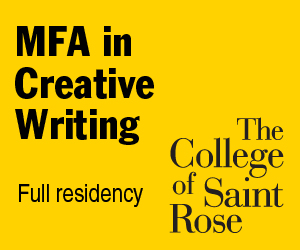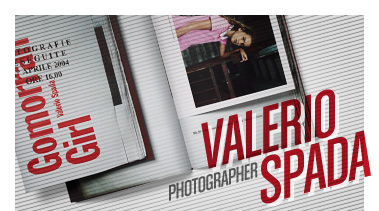Video Interview: Photographer Valerio Spada Discusses Gomorrah Girl
By Thomas V. Hartmann, Photography Editor & Contributor
Gomorrah Girl, Valerio Spada’s first book and the winner of Blurb’s 2011 Photography Book Now competition, is a poignant and sobering document of young women growing up in la Vela Rossa and la Vela Blu—the Red and Blue Sails—two of the most notorious housing estates in Naples, Italy.
Spada, a native of Milan who has also spent considerable time living in Paris, first learned of the Red and Blue Sails via Italian news reports of the tragic death of Annalisa Durante, a 14 year-old girl who died after being struck by a stray bullet during an attempted mob hit.
Moved by the story, Spada traveled to Naples to learn more about Annalisa and the violent milieu in which she lived and died. He started photographing in the Red and Blue Sails and soon became obsessed, so much so that he put on hold his career as a successful commercial and fashion photographer in order to spend as much time as he could in Naples, photographing girls who, like Annalisa, move too quickly along a trajectory from youthful innocence to grim experience. “At the age of nine they dance, make themselves up as TV personalities and dream to become one of them,” Spada writes in the book’s brief introduction. “At the age of thirteen or fourteen, they very often become mothers, skipping the adolescence which is lived fully everywhere else in Italy.
Spada photographs his subjects in the crowded flats they share with parents and siblings, in project stairwells and hallways, and in the schools they attend. In Spada’s beautifully realized color images, the girls are pretty and proud, at times even defiant; they look back at the camera as if daring Spada, and us, to underestimate their resilience or doubt that, one day, they will escape Naples’ mean streets.
Spada’s photographs, which include interior scenes and urban landscapes in addition to portraits, are reproduced on a heavy satin stock and appear in Gomorrah Girl in-between the larger matte pages of what amounts to a facsimile of Annalisa Durante’s police evidence book. As one reads and rereads Gomorrah Girl, these matte pages, made of a much thinner, coarser stock, become worn and creased, so that they come to resemble more and more the actual police document. Conceived in collaboration with Dutch graphic artist Sybren Kuiper, this design feels a bit awkward at first—for example, one has to turn the book sideways in order to look at Spada’s pictures—but one quickly sees how appropriate and chillingly effective it is. Layering Spada’s photos over top of reproductions of crime scene pics and other forensic evidence serves to remind us again and again of the backdrop of crime and violence against which the girls of the Naples projects become young women. It’s as if Spada’s photos are part of the Durante evidentiary record or perhaps are being saved in its pages for inclusion one day in a similar police document. Any one of the girls who Spada photographs could easily meet with the same fate as Annalisa Durante.
Throughout the Gomorrah Girl project Spada himself was never far from danger. Not surprisingly, the Comorra—the Neopolitan mob who control the housing estates—were less than enthusiastic to have a photographer in their midst and initially tried to bully Spada off of their turf, although he persisted and eventually became a familiar and mostly accepted figure. However, after taking what may be Gomorrah Girl’s most shocking photograph, an image of one young woman shooting up in the basement of a former kindergarten, Spada only narrowly escaped a beating and probably worse. Alerted to what he was up to by the shutter sound and red focusing beam of his camera, a group of junkies quickly surrounded Spada and, furious over his intrusion, started manhandling him. Somewhat miraculously, the local man who had led Spada to the basement managed to diffuse the situation, and Spada escaped unharmed. It was at that moment, however, that he knew the project was at an end.
Truly, the images collected in Gomorrah Girl attest that Spada has the determination and courage that are characteristic of the very best documentary photographers. That Gomorrah Girl is his first documentary project makes Spada’s achievement all the more impressive.
Spada was kind enough to granted stated this extended video interview on the eve of his first solo exhibit, at the Flatland Gallery in Utrecht. He spoke to me via Skype from his home and studio in Paris.
—-
Visit Valerio at:
www.valeriospada.com
twitter.com/ValerioSpada
Valerio on Facebook
valeriospada.tumblr.com
 Thomas V. Hartmann in
Thomas V. Hartmann in  featured,
featured,  featured interviews,
featured interviews,  interviews,
interviews,  video tagged
video tagged  Valerio Spada,
Valerio Spada,  photography,
photography,  word
word 












Reader Comments